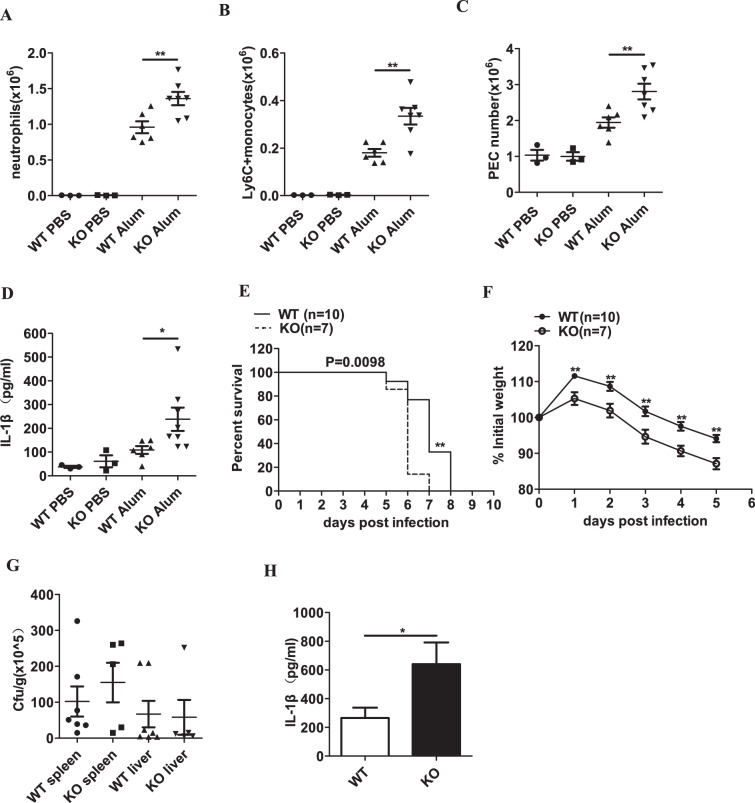Fig. 5.
RKIP deficiency promotes NLRP3 and NLRC4 inflammasome activation in vivo. a–d WT and Rkip-KO mice were intraperitoneally injected with Alum (50 mg/kg body weight) to induce peritonitis. After 12 h, the mice were sacrificed, and the peritoneal cavities were washed with 10 ml of ice-cold PBS. FACS analysis of neutrophils (a), Ly6C+ monocytes (b) or peritoneal exudate cells (PECs) (c) and ELISA of IL-1β (d) in the peritoneal lavage fluid (PLF) from the WT and Rkip-KO mice were performed (n = 3–7 mice per group). e Survival of the WT and Rkip-KO mice infected intraperitoneally with 5 × 102 CFU of log-phase S. typhimurium (n = 7–10 mice per group). f–h The WT and Rkip-KO mice were intraperitoneally infected with 1 × 102 CFU log-phase S. typhimurium, and weight loss was monitored until day 5 (f). At day 5 post-infection, the bacterial loads in the spleen and liver were determined (g), and PLF was collected for the detection of IL-1β (h) (n = 5–10 mice per group). Data are the mean ± SEM (a–d, g, h), and error bars represent SEM for (g) and are representative of two independent experiments. Student’s t test was used for statistical calculation. *p < 0.05, **p < 0.01, ***p < 0.001

